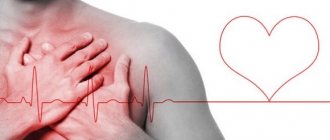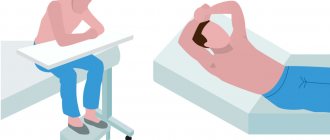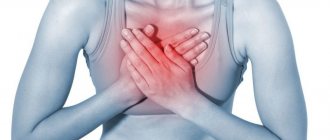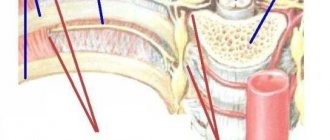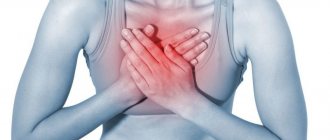If your heart hurts, you should contact a cardiologist. He will conduct a survey to find out what symptoms are bothering you and what they tried to stop them with. Having collected the necessary information, the doctor will refer the patient for a full examination. It is not recommended to refuse it due to unwillingness to pay money, since there is no other way to find out the diagnosis. Based on the results obtained, the specialist will be able to understand why a person has pain in the heart.
Often, heart pain occurs due to such pathological processes:
- heart attack;
- inflammatory diseases;
- problems with heart valves;
- pathological processes not related to the heart muscle.
It is equally important to know what pain in the chest area is. Such information will help narrow down the search and make a diagnosis faster. This list will help you figure out what they are:
- cutting;
- pulling;
- compressive;
- piercing;
- burning.
Whether the heart can hurt constantly, or whether the discomfort will manifest itself in attacks, depends on the cause of the development of the pathology. In some cases, unpleasant sensations do not leave the whole day, and sometimes they appear only under stress, but are acute. The totality of the information obtained will help the doctor create a treatment plan and accurately answer how long a person will continue to have severe chest pain.
Manifestations of a heart attack
Often, every day the heart hurts due to an impending heart attack. This disease is an acute lack of nutrition (ischemia), as a result of which myocardial necrosis (infarction) develops. Usually doctors, answering the question of why the heart hurts due to a heart attack, talk about a gradual blockage of the arteries or a detached blood clot that has blocked one of the main vessels. The development of this process is influenced by atherosclerosis, excessive physical activity, constant stress, etc. Heart pain begins to appear in patients 1-2 months before the attack. However, in some cases, for example, with a broken blood clot, the disease develops at lightning speed.
Signs of heart pain before and during an attack are usually the following:
- Constrictive pain. During an attack, it is difficult to understand where and how the heart hurts, because the pain radiates to the back, upper limb, neck and jaw. They spread mainly to the left half of the body. Heart pain is accompanied by increased sweating, vomiting and constant shortness of breath.
- Heart pain due to stress. The patient may feel discomfort after prolonged physical or mental work. His heart pain goes away only after resting or taking a Nitroglycerin tablet.
- Dyspnea. It often occurs with pain in the heart, indicating an imminent attack. Shortness of breath accompanies the patient almost constantly, for example, while lying down
in bed, during meals and after exertion. Immediately before the attack, the patient’s heart troubles him at night, which is why he constantly suffers from insomnia. - Fast fatiguability. When the heart hurts before a heart attack, the patient gradually begins to feel general weakness. Ordinary actions take more strength from him than before.
- Impotence. If a man's heart hurts due to gradual blockage of the arteries that supply the heart, then he has problems with erection. It can appear 1-2 years before the attack.
- Edema. This sign is the main one for people who want to know how to identify pain in the heart. The most noticeable swelling, indicating disturbances in the functioning of the heart muscle, is in the legs.
- My heart hurts in the morning. Developing myocardial ischemia is often accompanied by this symptom. Sometimes the patient experiences high blood pressure.
- Apnea. The patient's heart may bother him at night, and this manifests itself in the form of short-term stops in breathing.
If you have any doubts, it is better to consult a doctor. He will tell you how to distinguish pain in the heart during an attack from other pathological processes and advise methods to help relieve discomfort.
Organ structure
The heart is one of the main human organs. It nourishes all tissues and cells with oxygen and necessary substances, helping to transport blood throughout the body. It beats about one hundred thousand times per day, and in 60 seconds it pumps from 5 to 30 liters of blood.
Before you find out where an organ is located, you should familiarize yourself with its structure. It looks like a bag of muscles that looks like a flattened cone. The muscular organ has two surfaces - the lower diaphragmatic, the anterior sternocostal, two edges - left and right, as well as an apex and base. Usually its left edge is rounded, and the right edge is sharper . But where are the top and base of the heart?
The movable apex of the heart is formed by the left ventricle. In an adult, it is located in the left fifth intercostal space, in children under one year of age - in the fourth space, 1 cm laterally from the midclavicular line.
The fixed base is a horizontal line that runs along the upper cartilage of the third ribs. To imagine a more accurate location , you should refer to anatomical reference books, which reflect which ribs the boundaries of the heart are located between.
Thanks to palpation, pulsation, tremors, cardiac and apical beats can be determined. Experts determine the right border of the heart by moving their fingers between the ribs of the fourth space.
Inflammatory heart pathologies
The causes of heart pain are quite varied, and sometimes diseases that are characterized by an inflammatory process can cause them. Basically, such pathologies are a consequence of infection, a heart attack, the development of a malignant formation of impaired metabolism, etc. They are characterized by certain types of heart pain and other accompanying symptoms. You can understand this issue in detail by looking at the features of the main diseases:
- Pericarditis. This disease is characterized by inflammation in the area where the heart hurts, namely, in its outer layer. Unpleasant sensations may spread
in the collar area, along the chest and in the arm. It is sometimes difficult to understand where the heart hurts due to increased discomfort when coughing and swallowing. As pericarditis develops, patients' temperature rises, their breathing becomes shallow and their pulse quickens. - Myocarditis. Inflammation of the heart muscle is expressed quite acutely. It manifests itself in the form of unpleasant stabbing and aching sensations on the left side of the chest. Such symptoms can clearly indicate how to distinguish heart pain, so usually no special research is required. Discomfort increases after physical activity. The resulting heart pain is not relieved by Nitroglycerin.
Inflammatory diseases are characterized by constant pain in the heart, which is difficult to relieve and aggravated by stress. Trying to solve the problem yourself in such a situation is a basic mistake that can lead to death. That is why, when the first symptoms appear, it is recommended to consult a doctor to find out why your heart hurts and what to take to alleviate the condition.
Normal location of the organ
The chest cavity contains several organs that form a complex called the mediastinum. The heart and its vessels occupy its middle part and are bordered by the trachea, lymphatic vessels, lungs and thymus gland. It is separated from the internal organs by the pericardial sac .
The muscle pouch in a normal person is located in the upper part of the body, centered from the chest. He leans slightly to the left. Approximately two-thirds of its width is to the left of the center line of the body. If the heart is placed strictly in the center, this is not considered a pathology.
This arrangement of the heart allows for maximum protection from potential threats. After all, it is in the center where the ribs are connected that a solid plate is formed in the form of a thick bone.
It is possible to see which side of a person’s heart is on only with surgical intervention. However, you can feel its tremors yourself. To do this, you need to place your palm slightly to the left of the middle of the sternum. In this case, the fingers should be in the third intercostal space. An audible knock is produced when the heart valves close.
Heart valve pathologies
The heart muscle has 4 valves that must open and close. If disturbances occur in this process, then the problem can be determined if you understand where the heart hurts and the nature of the manifestations. Sometimes signs of the disease may not appear for a long time, and then quickly intensify. You can find out how symptoms of heart pain manifest due to valve problems by studying the list below:
- breathing problems due to shortness of breath;
- dizziness;
- constant pain in the heart of a compressive nature during exercise;
- pressing heart pain after inhaling cold air;
- arrhythmia;
- general weakness.
If you do not find out in a timely manner what exactly is hurting, then heart failure gradually develops. It manifests itself with the following symptoms:
- The appearance of extra pounds;
- Edema;
- Bloating.
Due to valve diseases, there are pains in the heart of various types, depending on the cause of the pathology, but mainly, patients feel compression in the chest.
Pressing heart pain
Basically, sensations of this nature indicate the presence of angina. Such pain can radiate to the chin, lower jaw, and shoulder. In this case, there is numbness in the left arm from the shoulder joint to the fingers. The duration of an attack can vary from one hour to several days. Pain occurs both as a result of exertion and in a calm state. Often, patients complain that their heart hurts at night, noting the pressing nature of the pain.
However, a heart attack can be accurately diagnosed only through examination, since myocarditis and mitral valve prolapse, as well as intercostal neuralgia, also manifest themselves.
Cardiomyopathy
Cardiomyopathy does not occur due to myocardial malnutrition, tumor or inflammation. This diagnosis is largely collective and belongs to the group of heart diseases of unknown origin. It manifests itself as dystrophic changes in cardiomyocytes (heart cells) and against their background the performance of the cardiac ventricles is often impaired.
Understanding how to identify heart pain in cardiomyopathy is not easy because the disease changes as it progresses. It will not be possible to relieve discomfort by taking Nitroglycerin, and initially the loads do not in any way affect the intensity of the manifestations of the disease.
In the early stages, patients have ambiguous symptoms of heart pain, namely:
- the nature of the pain can be anything;
- unpleasant sensations are transmitted to various places;
- The pain is not severe, but it does not stop.
As cardiomyomaty develops, the heart does not hurt so often, but the disease begins to manifest itself in attacks, especially after physical exertion. The resulting unpleasant sensations are sometimes relieved by Nitroglycerin. At an advanced stage, it is easier to answer what exactly hurts, since the painful focus has already been formed and has a specific localization.
Atrial fibrillation (AF)
Atrial fibrillation is the most common arrhythmia, usually a manifestation of other heart diseases (coronary heart disease, valvular disease, myocarditis, etc.) or metabolic disorders (thyrotoxicosis, electrolyte imbalance, etc.). Sometimes it occurs without an obvious cause, and then it is called idiopathic.
The mechanisms of development of atrial fibrillation are still not fully understood. In some patients, it occurs due to the presence of many chaotic circular waves of electrical excitation in the atria.
Atrial fibrillation is usually treated with medications that maintain a normal rhythm or prevent the heart rate from getting too fast. A prerequisite for atrial fibrillation is the use of anticoagulant therapy. It is used to thin the blood to prevent the formation of blood clots.
For the surgical treatment of atrial fibrillation, the method of radiofrequency ablation (RFA) is used, which is used to slow down the heart rate (RFA of the AV junction) or RFA “isolation of the pulmonary veins” is performed to restore sinus rhythm.
Arrhythmia
Arrhythmia is an irregularity in the heart rhythm, which sometimes manifests itself as unpleasant sensations in the chest. In this case, the causes of pain in the heart depend on the factor that influenced the development of the pathology. Among them are:
- bad habits;
- endocrine disruptions;
- hypertension;
- diseases of the cardiovascular system;
- excess weight;
- oncological diseases;
- taking medications;
- metabolic disturbances.
It is not recommended to try to eliminate the manifestations of the disease on your own, since pain in the heart due to arrhythmia must be determined by specialists using instrumental examination methods. This is due to the fact that the pain radiates to the left side of the torso, especially to the arm. This phenomenon is characteristic of many diseases. If you independently relieve symptoms with the help of medications, you can hide the development of a serious pathological process.
Heart location: left or right
The living motor is located in the upper part of the human body. The first gaming clubs under the Million brand began operating in 1992. However, with the introduction of a ban on gambling in Russia, the chain of establishments transferred resources to Internet sites. The official website of the casino has practical navigation and a consistent design. The interface is simple and understandable for beginners. The catalog contains classic and modern slots, roulette, video poker. The range includes devices from Yggdrasil, Belatra, Megajack, Pragmatic Play and other renowned providers. Here you can find out more about Million Casino. Normally, it is located in the chest cavity on the left.
The nuances of its placement depend on anatomy (body composition), age and gender, and differ in three main provisions:
- Horizontal or transverse placement - almost recumbent position of the heart shadow. In this case, the diameter is slightly larger than the average values, and the length is smaller. The angle of inclination of the cardiac axis is 36–47 degrees. The “waist” has a pronounced outline. The heart shape is spherical.
- Vertical – almost standing position of the heart in the chest. The length is larger than usual, and the diameter is smaller. The cardiac silhouette axis is tilted 48–58 degrees. “Waist” – smoothed.
- Oblique is the most common position of the human “motor”. The shape of the heart silhouette in this case is close to a triangle. The outline of the shadow is faintly visible. The axis of the muscle bag is tilted by 44–48 degrees.
Most common location of the human heart
The position and shape of the human motor can also be determined by the physiological structure of the body. In people with a wide and short chest, the heart is raised by a high diaphragm and almost lies on it, which determines its horizontal position.
But in those with a narrowed and elongated chest, the diaphragm has a low position and helps to stretch the muscle sac, moving it to a vertical position. Most often there are people who have signs of both the first and second types - this is an oblique placement.
Read also: Solutions for inhalation with a nebulizer for a runny nose
Important! Regardless of the position of the heart, it is better and more beneficial for healthy people to sleep on their left side. This will relieve tension in the organ and improve blood circulation. But for patients with serious cardiac problems and those who have suffered a myocardial infarction, it is recommended to rest on the right side.
Heart disease
Heart defects are predominantly congenital. In most cases, they do not appear at all. However, sometimes the defects cause severe discomfort and can be fatal. You can find out how the symptoms of heart pain manifest themselves in this case from the list below:
- constant pain (stabbing, aching, cutting);
- increased blood pressure;
- swelling of the lower extremities.
The attending physician should tell you what to do if you have pain in the heart due to a defect. Treatment for this problem usually consists of symptomatic therapy and surgery.
Treatment of the disease
If the false chord is not life-threatening and does not affect health, preventive monitoring by a cardiologist is indicated. Moreover, treatment as such is usually not prescribed - the patient regularly visits a specialist every 3-6 months.
If the situation is dangerous and the chord threatens the functioning of the heart (can lead to cardiac arrest), surgical intervention is indicated to remove it. Such a decision is made if the functioning of the heart is severely impaired, causing regular disruptions in the distribution of blood flow.
It is also allowed to use folk remedies (in consultation with the doctor):
- Take a handful of raisins every day in the morning (on an empty stomach);
- take valerian decoctions;
- drink tea based on peppermint or calendula flowers.
Left valve prolapse
Prolapse in the left valve is a severe pathological process characterized by the following symptoms:
- loss of consciousness;
- dizziness;
- rapid pulse;
- feeling of lack of oxygen;
- headache.
You can find out how to determine pain in the heart due to prolapse by its nature. The resulting discomfort has no connection with stress and manifests itself in the form of pressing and aching pain that is not eliminated by Nitroglycerin.
Dull heartache
Dull pain in the heart area is not only a sign of cardiac pathology. This symptom may indicate problems with the spine and lungs. Its reasons may be:
- manifestations of mitral valve disease;
- some forms of myocarditis;
- symptoms of neurocirculatory dystonia.
Unlike other causes, dull heart pain has one distinctive feature - it is long-lasting and regular.
An attack can be triggered by active work, a stressful situation, hypothermia or overeating.
Aortic diseases
For heart pain, treatment is not always provided on time; for example, aortic dissection is a case where help often comes too late. The severe pain inherent in this pathological process causes loss of consciousness and painful shock. If immediate help is not provided, the person may die.
Patients are often puzzled: how to get rid of pain in the heart, but in fact, unpleasant sensations are a consequence of other diseases. Among them are the following frequently occurring pathological processes:
- Intercostal neuralgia. It is characterized by acute pain, which intensifies with movement, inhalation, coughing, etc. It can last from 5 minutes to 2-3
days. Localized in the right or left half of the chest in the intercostal space. - Osteochondrosis. The focus of pathology is located in the cervical or thoracic region. The patient's hands become numb and pain radiates to the shoulder blade and neck. Discomfort increases when moving.
- Diseases of the nervous system. Neuroses provoke disruptions in the autonomic part of the nervous system. Patients complain of numerous signs of pathologies, including heart problems. ECG and other studies cannot detect them. People with diseases of the nervous system often experience panic attacks due to an unknown cause of their condition. In such a situation, only a psychotherapist can tell you how to get rid of heart pain while at home. Other doctors will only confirm the absence of other diseases.
- Lung pathologies. Pleurisy and pneumonia often manifest as pain that resembles heart pain. It gets worse with coughing and deep breathing.
- A teenager's heart hurts. In young people, chest pain may occur due to carnitine deficiency. It is a substance responsible for the supply of nutrition to cells. A lack of carnitine occurs due to excessively rapid tissue growth during this period. Pain caused by physical inactivity is no less common. The heart needs regular exercise to become stronger. Without them, any overload manifests itself as discomfort in the chest.
In the case of the listed diseases, you can understand how to relieve heart pain after an examination, which is aimed at determining the cause of the discomfort. Nitroglycerin tablets will be ineffective.
Causes of true heart pain
True heart pain occurs due to malnutrition of a certain area of the heart muscle. This is possible with:
- spasm of the coronary vessels, their impaired tone, incorrect reaction (hypertension, vegetative-vascular dystonia);
- inflammation of the myocardium (myocarditis);
- the occurrence of ischemia from a pronounced atherosclerotic process or thrombosis;
- myocardial dystrophy and cardiosclerosis;
- heart defects;
- chronic heart failure.
Ischemic pain is most pronounced in acute myocardial infarction. They are intense, retrosternal, last up to a day or more, and are accompanied by pallor and a drop in blood pressure.
Angina pectoris often depends on physical or emotional stress. Substernal pressing pain radiates to the left, to the shoulder, shoulder blade, jaw.
Other heart diseases cause long-term, intermittent, dull or stabbing pain with varying degrees of radiation. Accompanied by arrhythmia, increased blood pressure, body temperature, dizziness, and general weakness.
Women often complain with complaints during menopausal changes in the body. Here the pain is caused by a lack of sex hormones. They are provoked by anxiety and poor nutrition. Accompanied by many vivid emotions: fear of death, suffocation (without increased breathing), darkening of the eyes, interruptions in rhythm, sweating. In men, menopause also matters, but it usually occurs later and coincides with the development of atherosclerosis and true ischemia.
First aid for heart pain
Medicines for heart pain are prescribed by the attending physician based on the diagnosis. Trying to select medications on your own is prohibited, as you may worsen your condition. But what if the attack comes suddenly? In such a situation, the following instructions will help you understand how to get rid of heart pain:
- First you need to stop running around looking for medicine. Instead, you need to calm down and sit down.
- The room should be well ventilated.
- Breathing should not be limited by clothing, so it is better to unbutton the top buttons.
- If possible, you should lie down. If the pain subsides, then it is quite possible that the problem is not in the heart muscle. With increasing discomfort and a feeling of squeezing, we can talk about an imminent attack.
- To improve the condition, you need to put medicine for heart pain under your tongue - for example, a Nitroglycerin tablet, and then call an ambulance.
After the medical team arrives, it is necessary to list the painful symptoms to the doctors and tell them what actions have been taken since the onset of the attack. All this will help to quickly normalize the condition, since you can relieve pain in the heart only by knowing the whole picture.
Pain in the chest has different manifestations. From them you can roughly understand what is tormenting a person. However, only the attending physician can make an accurate diagnosis, focusing on the symptoms that arise and the results of examinations. Finding on your own what to take for heart pain is life-threatening - there are many diseases that only masquerade as pain in the chest area.
What to do when it hurts
Do you suspect you have heart disease or have you already been diagnosed? If you experience severe chest pain, take the following steps.
- Don't panic, get into a sitting position.
- Unbutton tight clothing, shirt collar.
- Ask to open a window for fresh air.
- Carefully change your body position. If the pain subsides, the cause is most likely due to a non-cardiac disease.
- If the intensity increases and compresses, the possible cause is angina pectoris.
- Dissolve a nitroglycerin tablet under your tongue. The angina attack subsides after a few minutes.
- If the spasm does not stop within 15 minutes, take a second tablet and call an ambulance - there is a possibility of a heart attack.
Even if you managed to relieve the pain on your own, do not relax. You need to be examined by medical specialists.



